Renewable Energy
Transforming our environment and communities, with integrity and vibe

Restoration and Resilience
Transforming our environment and communities, with integrity and vibe
Anchor QEA’s engineers, scientists, biologists, planners, and landscape architects are dedicated to solving complex water resource and environmental challenges.
As experts in estuarine, coastal, riverine, and lake systems, we thrive on creating innovative restoration designs and resiliency strategies across all coasts of the United States, including the Great Lakes, and internationally.
Get in touch with Anchor QEA's restoration, resilience, and mitigation experts.
Services
- Estuarine, coastal, riverine, and lake restoration and resilience
- Climate adaptation and mitigation planning
- Integrating Natural and Nature-Based Features through project lifecycle
- Engineering with Nature
- Waterway dredging and beneficial reuse
- Multi-benefit flood damage reduction
- Shoreline and water access
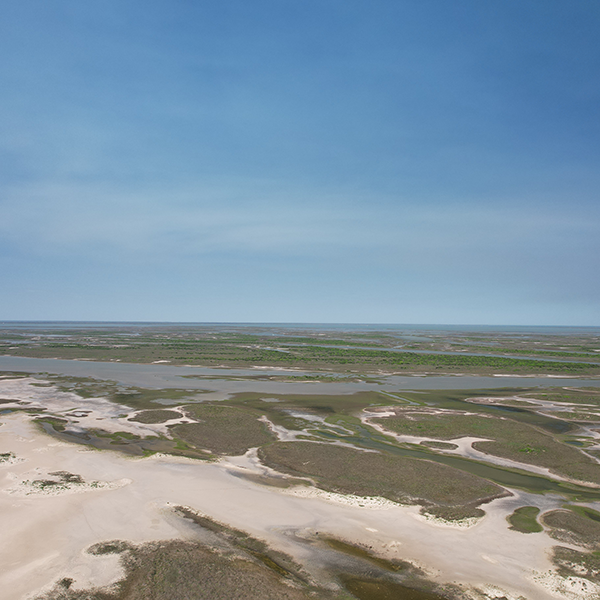
Cedar Bayou
Harris County, Texas
In partnership with the USACE, Anchor QEA is developing an integrated feasibility study and environmental impact statement to evaluate excavation of a 45-foot-deep ship channel that will serve a container terminal at the mouth of Cedar Bayou.
Beneficial use of 20 to 40 million cubic yards of sediment material obtained from dredging the channel will develop nearshore and offshore placement areas. These restoration areas will support critical avian and aquatic habitat, while providing erosion protection to nearby shorelines.
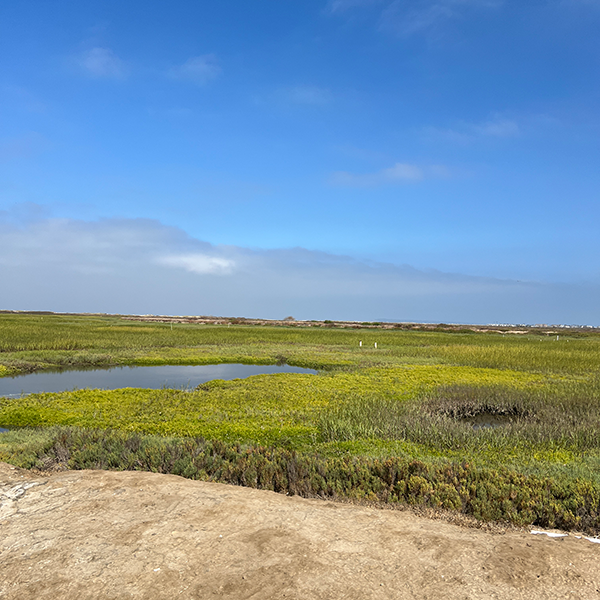
Tijuana Estuary
San Diego, California
The largest coastal wetland in Southern California, Tijuana Estuary is an essential stopover point on the Pacific Flyway for more than 370 species of migratory and native birds, including six endangered species.
The tidally influenced estuary consists of nearly 2,300 acres of habitat and is subject to flood sedimentation from trans-border canyon flows from Mexico. Anchor QEA’s comprehensive design includes characterization, hydrodynamic modeling, dredging, and excavation of more than 600,000 cubic yards of sediment. Beneficial use techniques are applied for beach nourishment, dune creation, and quarry restoration on more than 87 acres within the estuary.
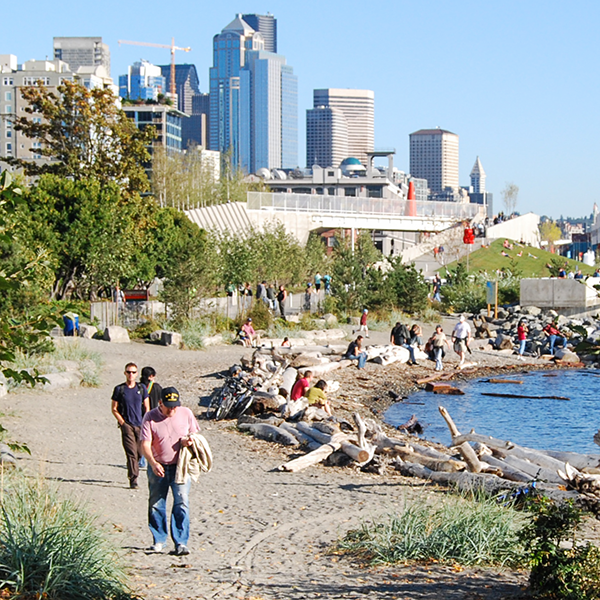
Elliott Bay Habitat Enhancements
Seattle, Washington
Habitat transformation has been underway along Seattle’s waterfront and Elliott Bay for more than 15 years, first with the Olympic Sculpture Park in 2007. The iconic park offers public access to the water and 1,200 linear feet of shoreline restoration, which was designed and permitted by Anchor QEA.
Enhancements include conversion of a riprap revetment to beach, a nearshore shallow-water habitat corridor for migrating salmon, and formation of a kelp forest in the subtidal zone. More recently, Anchor QEA has designed restoration features along 3,100 linear feet of the waterfront including gravel substrate enhancements and an expansive intertidal habitat beach.
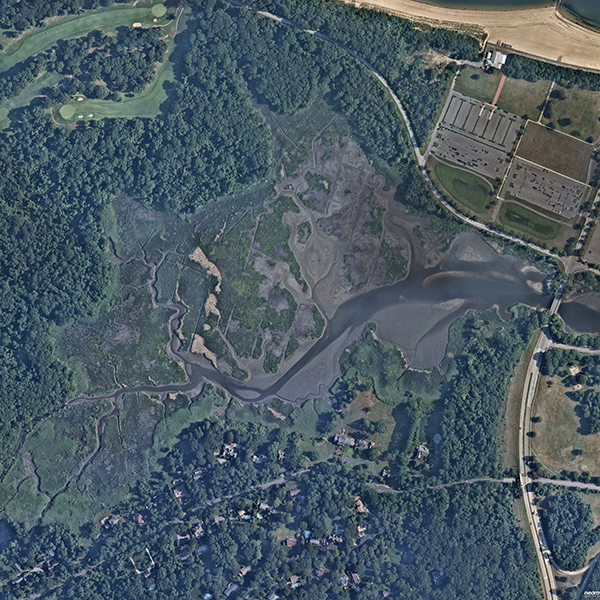
Sunken Meadow State Park
Suffolk County, New York
This salt marsh on the coast of Long Island has experienced significant habitat loss and degradation due to an earthen berm that breached during Superstorm Sandy, as well as surrounding land use impacts.
To enhance avian habitat in this designated Bird Conservation Area, Anchor QEA designed a 400-acre tidal marsh restoration with support from Princeton Hydro.
Integral to the design, Anchor QEA developed an innovative site hydrodynamic model to evaluate marsh flow patterns and the efficacy of proposed restoration approaches.
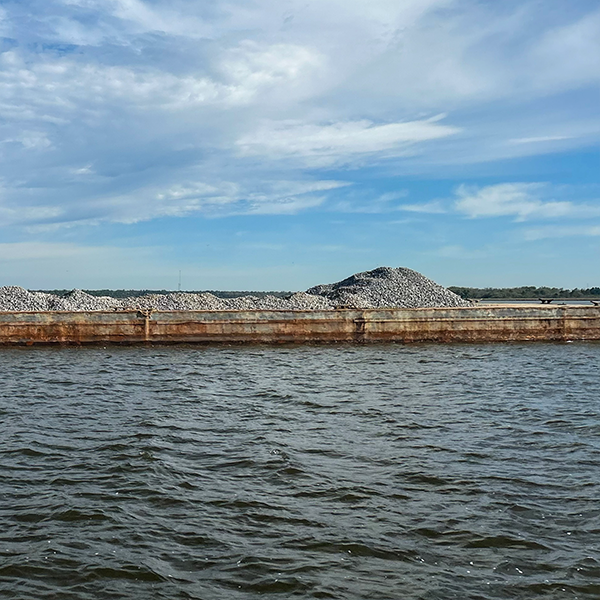
St. Louis Bay Oyster Reef
Pass Christian, Mississippi
This habitat-friendly, reef cultch project for The Nature Conservancy creates diverse water-bottom habitat for oysters. Located at the mouth of the Wolf River, the subtidal reef enhancement also supports Mississippi commercial and recreational fisheries.
To determine the most suitable placement of a 20- to 30-acre oyster reef in the 60-acre project area, Anchor QEA performed geotechnical probing of the water bottoms and reviewed bathymetry surveys and water-bottom side-scan data. Tasks also included 30% and 100% construction documents and performing construction administration and observation.
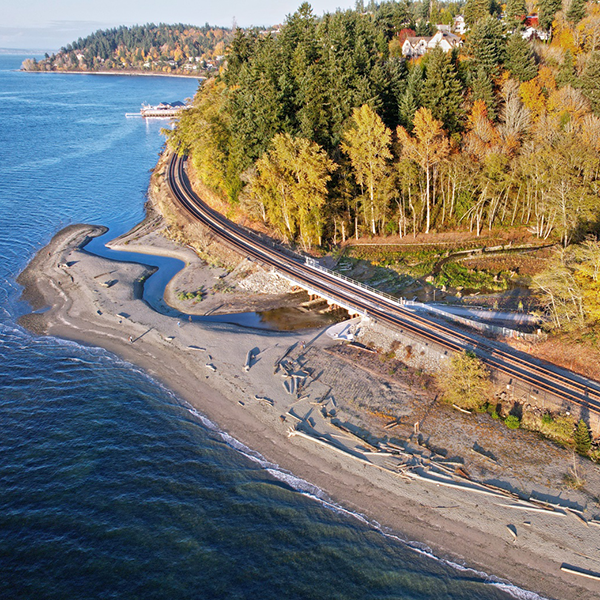
Meadowdale Beach Park and Estuary
Edmonds, Washington
The first pocket estuary restoration along BNSF Railway's 46 miles of mainline track bordering Puget Sound, Meadowdale Beach Park plays a critical role in the survival of threatened species such as Chinook salmon and Southern Resident orcas.
A 130-foot span railroad bridge replaces the undersized culvert below the railway, removing a fish barrier and restoring sediment flow, a habitat-forming process essential to Puget Sound’s ecosystem. Anchor QEA landscape architects led the restoration including fill removal, large wood placement, and revegetation. A walkway meanders under the bridge, culminating at a beachfront plaza, providing safe ADA access and recreation opportunities.
Anchor QEA is a partner in solar power development.
We provide ecological assessments, environmental siting, geotechnical and civil engineering, brownfield development, and stormwater management, as well as permitting and regulatory services to ensure projects comply with applicable statutes.Working with developers and utilities across the United States, our teams assist planning and construction phases of utility-scale, grid-connected solar projects.
Anchor QEA leads environmental impact assessments, due diligence, and permitting compliance for wind energy facility siting nationwide.
From habitat and biological assessments to compliance oversight under Section 106 of the National Historic Preservation Act, our team provides start-to-finish development and support.Learn more about our offshore wind services.
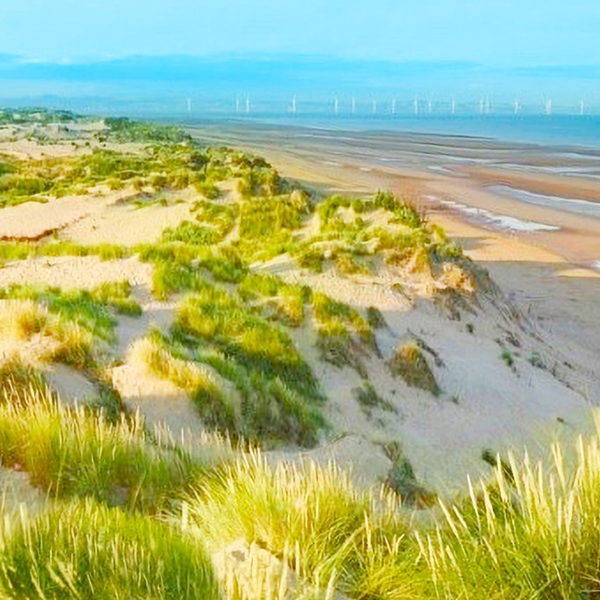
Engineering with Nature Proving Grounds
Nationwide, United States
In partnership with the Dredge Research Collaborative, Anchor QEA is working alongside the U.S. Army Engineer Research and Development Center and the USACE on all continental U.S. coasts, including the Great Lakes, to develop a design and construction framework for Natural and Nature-Based Features and promote Engineering With Nature (EWN) and beneficial use techniques so that communities vulnerable to flooding, sea level rise, and storm surges can incorporate nature-based approaches into resiliency strategies.
Anchor QEA is working with USACE Buffalo, Chicago, Detroit, Mobile, Philadelphia, and San Francisco Districts as EWN Proving Grounds to develop innovative system-scale projects specific to each region.
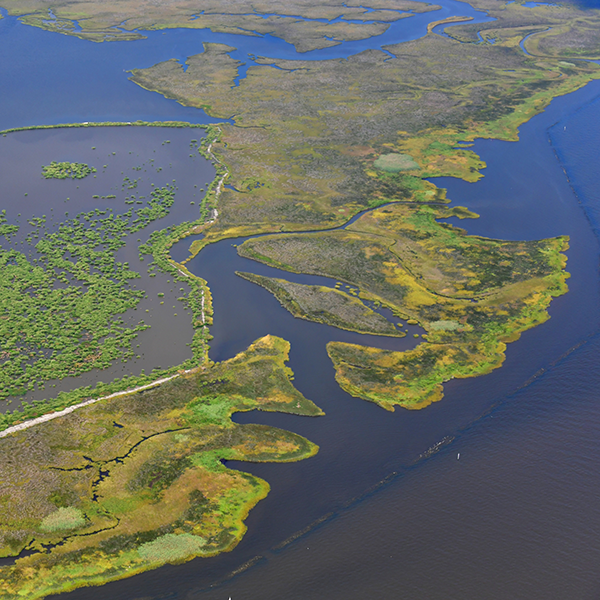
Hancock County Marsh Living Shoreline
Hancock County, Mississippi
Born from Natural Resource Damage Assessment funds, this project preserves and protects existing habitat, while also providing secondary shellfish productivity areas. Prior to construction of the living shoreline, the Hancock County Marsh Coastal Preserve was the fastest-eroding marsh in Mississippi, with losses equaling 7 acres of intertidal marsh annually.
The living shoreline design uniquely combines 6 miles of segmented breakwaters with 46 acres of subtidal reef and 46 acres of restored marsh to reduce storm damage while enhancing aquatic habitat. Since construction, the breakwaters have weathered multiple storms and hurricanes with minimal damage.
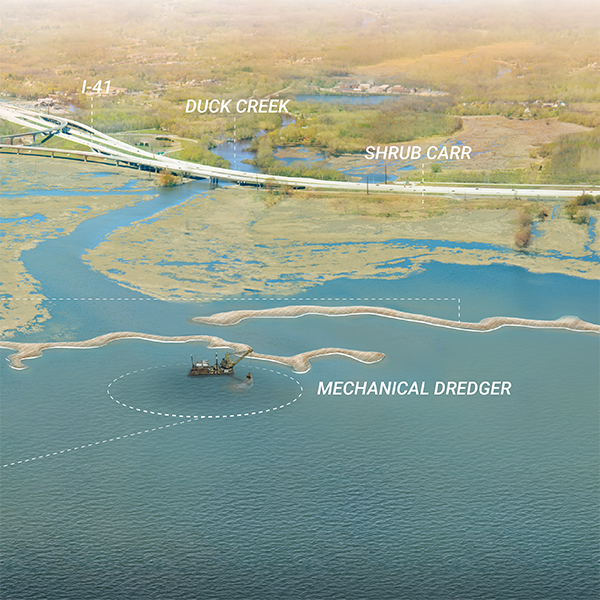
Duck Creek
Green Bay, Wisconsin
In partnership with the Dredge Research Collaborative, Anchor QEA is working with the U.S. Army Engineer Research and Development Center and the USACE Chicago District to develop a long-term restoration plan for the mouth of Duck Creek on Lake Michigan.
Varying objectives and goals of myriad stakeholders, including the Wisconsin Department of Natural Resources and USACE, were fulfilled through site-specific hydrodynamic modeling and innovative landscape features development. The Duck Creek restoration project is a key initiative under the Great Lakes Coastal Restoration Study that the USACE is currently advancing.
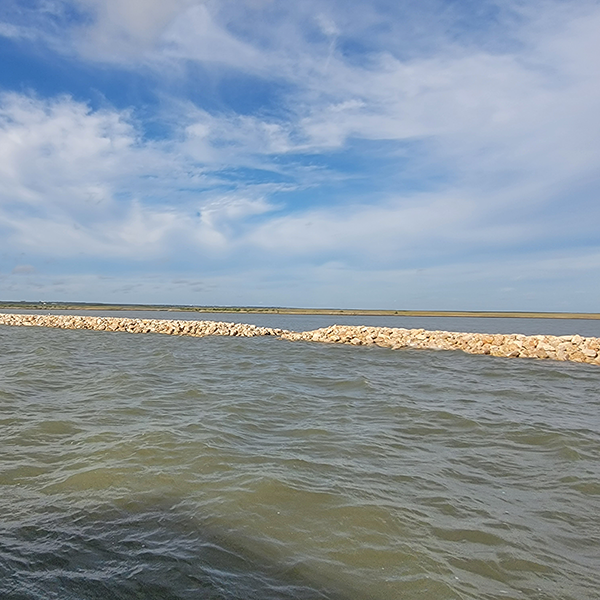
Nueces Delta Shoreline
San Patricio County, Texas
For this National Fish and Wildlife Foundation-funded project, a 0.75-mile rock breakwater was implemented to reduce erosional wave energy transmitted to the shoreline. It protects and restores important habitat for bird species such as white pelicans, brown pelicans, reddish egrets, black skimmers, least terns, snowy plovers, and piping plovers impacted by the Deepwater Horizon oil spill.
Anchor QEA performed coastal modeling and permitting, developed final designs and construction documents, performed construction administration and observation, and provided recommendations for the monitoring and adaptive management plan.
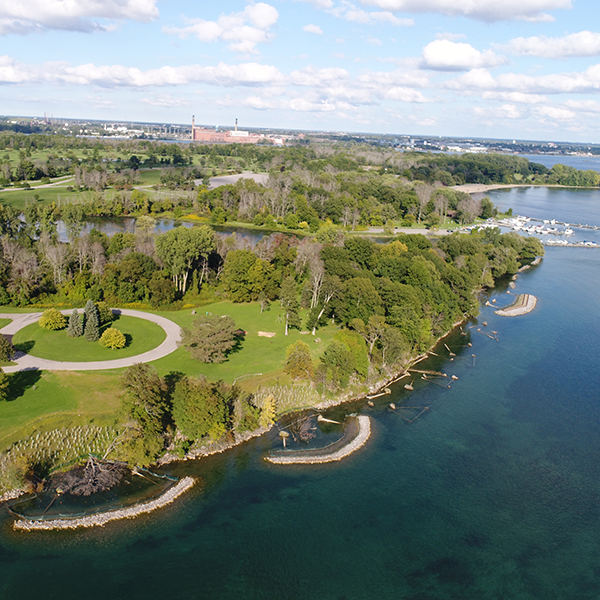
Little Beaver Island
Grand Island, New York
At Little Beaver Island State Park, high-velocity currents, wind-driven waves, and ice scour contributed to extreme bank erosion and property loss along 1,000 feet of shoreline and nearshore habitat. To improve resiliency and address erosive forces, riparian and coastal wetland habitat was created and restored.
Anchor QEA developed all habitat design plans, technical specifications, and cost estimates and provided construction contract administration for Buffalo Niagara Waterkeeper. Since construction, the resilient design has withstood the effects of multiple winter storms.

Muddy Neck Marsh
Assawoman Wildlife Area, Delaware
To restore severely degraded coastal salt marshes in one of Delaware’s premier parks, Anchor QEA implemented a sediment beneficial use project that provides elevational uplift to combat climate effects for this wildlife area along the Inland Bays.
Living shoreline, beach, and marsh platform beneficial use options were explored. Ultimately, thin-layer placement of dredged material was selected for the Muddy Neck Marsh Complex, making it the first large-scale thin-layer placement marsh restoration in Delaware.
We look forward to continuing the conversation.

Duwamish River People's Park and Shoreline Habitat
Seattle, Washington
The Duwamish River People’s Park and Shoreline Habitat is a new 14-acre habitat and public access site in Seattle, transformed from a contaminated legacy industrial site into a thriving ecological and community space. Developed for the Port of Seattle, the site features restored salt marsh habitat, an elevated walkway, a hand-carry boat launch, and community-designed public art.
As a Natural Resource Damage Assessment mitigation bank, it provides off-channel habitat for juvenile salmon. Anchor QEA led habitat and coastal engineering design, permitting, and construction inspection. Since completion, thousands of young salmon have been observed using the restored marsh.

East Commencement Bay Habitat Opportunity
Tacoma, Washington
The East Commencement Bay Habitat Opportunity is a landmark restoration effort led by the Port of Tacoma in partnership with the U.S. Army Corps of Engineers. This project will beneficially reuse over 1 million cubic yards of clean dredged material from the Blair Waterway deepening to create nearly 5 acres of intertidal mudflat and salt marsh.
The restored habitat will support juvenile salmon and reduce shoreline erosion, while generating conservation credits to fulfill future Endangered Species Act mitigation requirements. Anchor QEA is leading habitat design, technical specifications, cost estimates, and permitting and supporting the Port of Tacoma with strategic planning to help establish this habitat conservation bank.

Port of Los Angeles Mitigation Bank
Los Angeles, California
The Port of Los Angeles mitigation bank was the first marine subtidal bank established in Southern California. Mitigation sites are uniquely located within an active port and include shallow water habitat and open water created from removal of fill, which offset port development actions and leverage the bank instrument to streamline approval of mitigation projects.
Anchor QEA supported development of the bank instrument, acquired agency approvals, created a mitigation banking handbook for the Port, and negotiated long-term mitigation site protections and uses that allow port activities but preserve the ecological value of the sites.
Our People
As Anchor QEA’s landscape architecture practice lead, Anna is focused on planning, designing, and implementing public shoreline projects that serve people and benefit the environment. Anna leads multidisciplinary teams to understand the dynamic interface of water and land and then identify how to balance seemingly conflicting project goals, such as expanded public access and recreation, alongside ecological restoration.

Anna Hook Spooner
PLA, ASLA, ENV SP
Explore our offshore wind experience.
Meet The Team
Lorem ipsum odor amet, consectetuer adipiscing elit. Morbi congue eget, elementum iaculis nulla enim.

Gretchen Taylor
Get in Touch with Anchor QEA
The headline and subheader tells us what you're offering, and the form header closes the deal. Over here you can explain why your offer is so great it's worth filling out a form for.
National Reach, Local Knowledge

2024
ASLA, Washington Chapter, Award of Excellence, General Design, Public Ownership Category, Meadowdale Beach Park and Estuary Restoration
2023
National Recreation and Park Association, Innovation in Conservation Award, Meadowdale Beach Park and Estuary Restoration
2022
ASLA, Washington Chapter, Honor Award, General Design, Public Ownership Category, Dickman Mill Park Expansion and Head Saw Restoration
2022
Washington Recreation and Park Association, Spotlight Facilities and Parks Award, Population Over 100,000, Dickman Mill Park Expansion and Head Saw Restoration
2019
ASLA, Washington Chapter, Merit Award, General Design, Public Ownership Category, Meydenbauer Bay Park Development
2018
American Planning Association, Federal Planning Division Honor Award, Outstanding Collaborative Planning Project, Alcatraz Ferry Embarkation Environmental Impact Statement
2014
Futurewise, Excellence in Protecting Natural Resource Areas, Seahurst Park Ecosystem Restoration
2024, ASLA, Washington Chapter, Award of Excellence, General Design, Public Ownership Category, Meadowdale Beach Park and Estuary Restoration
2023, National Recreation and Park Association, Innovation in Conservation Award, Meadowdale Beach Park and Estuary Restoration
2022, ASLA, Washington Chapter, Honor Award, General Design, Public Ownership Category, Dickman Mill Park Expansion and Head Saw Restoration
2022, Washington Recreation and Park Association, Spotlight Facilities and Parks Award, Population Over 100,000, Dickman Mill Park Expansion and Head Saw Restoration
2019, ASLA, Washington Chapter, Merit Award, General Design, Public Ownership Category, Meydenbauer Bay Park Development
2018, American Planning Association, Federal Planning Division Honor Award, Outstanding Collaborative Planning Project, Alcatraz Ferry Embarkation Environmental Impact Statement
2014, Futurewise, Excellence in Protecting Natural Resource Areas, Seahurst Park Ecosystem Restoration



